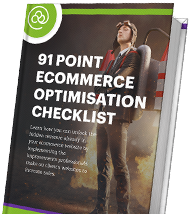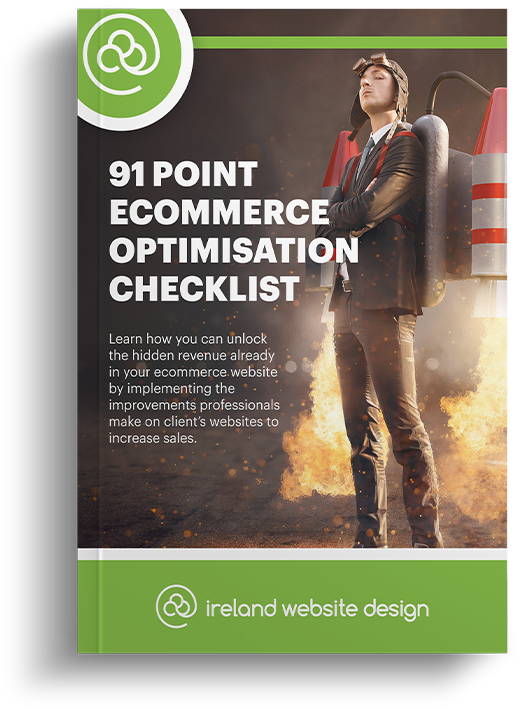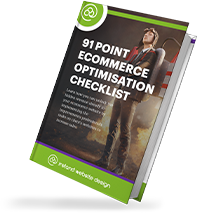The pandemic brought about seismic shifts in the retail industry.
In December 2020 alone, An Post delivered a record-breaking 3.3 million parcels per week, a 230% increase from the previous year.
Now, in post-pandemic life, the eCommerce world has forever been changed.
Even for a traditional, brick-and-mortar store or new business, it’s now essential to not only sell your products online, but to meet the expectations of the modern online consumer and maintain a competitive edge against other businesses.
Whether you’re about to start an eCommerce business or are looking to enhance your current business plan, let’s dive right into our 15 essential eCommerce strategies to help you convert more visitors into customers than ever before.
1. Incorporate AI-driven personalisation technology
80% of shoppers are more likely to buy from a company that offers a personalised experience.
AI-driven personalisation technologies like Shopbox allow you to seamlessly incorporate personalisation into your customers’ online shopping experience by assisting, curating, and advising visitors in real time.
These technologies tailor the shopping experience of your eCommerce website to each customer based on their browsing and buying habits, offering features like product recommendations, automated abandoned cart emails, and targeted ads.
2. Opt for automated warehouse systems
Now that many consumers favour online shopping in the eCommerce industry as their go-to, it’s essential to meet this increased level of demand while keeping delivery times as short as possible for every order.
eCommerce store owners are turning to automated warehouses in order to streamline logistics. By reducing the time it takes for eCommerce stores to process orders and minimising the potential for error, an automated warehouse can ultimately increase customer satisfaction and loyalty.
3. Maintain transparency to encourage consumer loyalty
94% of consumers will stay loyal to a company that’s fully transparent with its customers.
To avoid raising alarm bells for potential customers or losing the trust of current ones, enhance transparency across your eCommerce operations by:
- Adopting clear messaging across all of your business activities
- Ensuring delivery estimates are as accurate as possible
- Working exclusively with partners that align with your brand values
- Ensuring promotions are clearly communicated
4. Offer sustainable shopping solutions
With the climate crisis increasingly at the forefront of our minds, more people are looking for eco-conscious and sustainable business ideas and brands to support.
In fact, 84% of consumers are less likely to support a brand that doesn’t have eco-friendly ideals.
It’s super important to do your best to offset your carbon footprint and minimise your impact on the environment by offering sustainable packaging and delivery solutions. Not only is this good for the planet, but it’s good for business, too, increasing your customer base and encouraging loyalty.
5. Let your website and online store do the selling
If you invest in an expertly created website for your own eCommerce business, it can be a powerful sales tool for you 24/7.
In the digital world, consumers prefer a ‘self-serve experience’, meaning they want to research products and services themselves.
Allow your online reviews, product descriptions, and product photos to do the hard work for you. Ensure you offer a seamless online shopping experience with clear calls to action to encourage online visitors to purchase.
Consider offering a free trial, too, as a pain-free way for future customers to get a taste of what your eCommerce business offers without risk or commitment up front.
6. Invest in paid advertising
Pay-per-click (PPC) and paid advertising can help boost your online presence and get your website noticed by a wider audience.
Paid advertising also allows you to gain traction with the exact type of customers you’re trying to target. This speeds up the customer journey and enables you to continue to target current and new customers, and increase customer loyalty – essential in such a competitive online marketplace.
7. Optimise your website for voice eCommerce
Online shopping via smart speakers like Google Nest and Amazon Echo is steadily rising, as many shoppers prefer voice search to typing queries.
Irish eCommerce businesses can optimise their website for voice search by targeting more conversational or long-tail keywords, for example, “where’s the cheapest place to buy trainers” rather than “cheap trainers”.
Many voice searches are question-based, so focus on delivering quality answers to commonly asked questions – especially on FAQ pages.
8. Create 3D product visualisers
3D product visualisers and Augmented Reality (AR) are great ways to help consumers make informed buying decisions by letting them “try before they buy” and get a realistic view of your products with 3D mapping or videos.
Early adopters like Ikea are paving the way for visual shopping innovation. They’ve created a visualiser that shows you how their furniture will look in your home, making it easier for consumers to make a decision.
9. Consider subscription models
Subscription business models are a fantastic way for eCommerce businesses to increase customer retention and get them to stick around on your online marketplace.
Take Savage x Fenty, for example. They offer their customers discounts on their monthly underwear haul for a monthly fee. If they don’t want to buy one month, they get credit to their account.
Along with loyalty points, free shipping, and VIP access to new products, you can customise your subscription model to suit your eCommerce business.
10. Prepare for the direct-to-consumer (DTC) approach
Some brands have now started to sell directly to their target market online rather than going through a retailer.
If you’re a retailer that stocks a variety of brands, you can prepare your sales process for this approach by:
- Creating contracts that protect you from financial fallout if a brand you stock decides to go DTC
- Asking brands you stock for feedback on your eCommerce store so you can fix any issues that might cause them to leave
- Surveying your partners to identify who might be at risk of leaving
- Combining customer data from brands you stock who sell directly for more targeted marketing campaigns
11. Maintain a solid social eCommerce store
So many consumers now shop while they scroll social media and checkout directly without leaving the platform.
The younger generation often uses social media to discover new brands and get inspired by the latest trends. With 39% of 18-34-year-olds having purchased at least once through social media, linking your online store to your social media marketing profile is a commercial no-brainer.
12. Offer live shopping to your followers
Live shopping involves an influencer or brand live-streaming a product demonstration and answering real-time questions.
Live shopping streaming is an excellent opportunity for your own eCommerce company to offer giveaways or discounts only available during the live stream. Live shopping can increase engagement and create not only a sense of exclusivity, but a deeper sense of community around your new online business or brand at the same time.
13. Offer Q-commerce services
Q-Commerce (Quick-commerce) is where businesses deliver goods on the same day or within just a few hours of purchase. Think of food businesses that use Deliveroo and other quick-delivery methods to get your order to your doorstep as quickly as possible – that’s Q-Commerce!
The same demand is also growing in the fashion, beauty, and electronics industries, as young shoppers are eager for quicker, more flexible delivery options.
14. Provide alternatives for delivery and returns
Online shopping has become the norm for many consumers, and with so many brands moving online, shoppers are often looking for the easiest delivery and return options when they make a purchase.
Paperless delivery allows your customers to complete the whole process online, meaning they don’t have to go to the physical store to make a purchase or process a return. No more printing out return forms to deal with either!
Some companies even offer out-of-home delivery lockers – popular in Asia and Europe – which let customers collect their deliveries whenever they want, streamlining the customer experience and cutting delivery and shipping costs for businesses.
15. Allow for video consultations
Video consultations are a fantastic way for your eCommerce business to help shoppers get a more in-depth view of their desired products without leaving their houses and support shoppers who aren’t as comfortable shopping online.
Users can simply press a button on your website to call your shop or warehouse and talk to an employee, ask any questions they have about a particular product, and see how it looks in real life, ultimately minimising returns and increasing online sales.
Take your eCommerce business to the next level with Ireland Website Design
As a leading web design and development agency in Ireland, we understand the importance of great digital touchpoints for successful business.
Because strengthening your online business presence is central to everything we do, we help you adapt to the changing face of a digital society.
With web design services, digital marketing tools, branding, and so much more — our team is ready to take on your next challenge.
We don’t just develop your website. We build your brand identity and entire online presence for your target audience.
Whether you’re just starting an eCommerce business or you’re a small business owner looking to refine your current strategy, get in touch with us today to ensure your eCommerce business model is future-proof.




